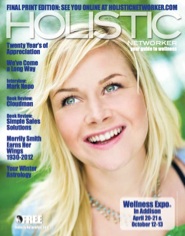Why do we cheat on ourselves?
As I was writing this weekend, my ten-year old son approached my desk and said he had “a confession”. That always peaks a mother’s interest. He said, “I was really looking forward to my friend’s slumber party so I could celebrate by having cake and soda. Then I realized that it might be a dumb thing to do, celebrating by putting garbage in my body.” Out of the mouth of babes comes the truth!
Fanaticism in any pursuit, including our diet, would be against Traditional Chinese Medicine (TCM) principals and guidelines, but we do reach a new level of gratitude, awareness, and health when we relish all our nutrient-rich meals and don’t look forward to cheating on ourselves as a reward for all the good we’ve done prior.
In this article, Part III in our series Eating with the Season, we’ll look at what TCM nutrition recommends as the best foods to eat in summer for those wanting to reward themselves with the most appropriate, nurturing foods possible. But first, let’s take a look at this time we call summer.
Summer time = Fire Time
The sun emits short-wave radiation that enters the Earth’s atmosphere in the form of UV (ultraviolet), visible light, and infrared radiation. In the Northern Hemisphere, summer occurs in June, July, and August and that is the time when we experience the longest and warmest days of the year—more hours of and more intense radiation than any other time of year. Thus, the word most associated with summer in TCM is “heat”. In 2008, our longest day will be June 20 (but that won’t be the hottest day—since temperature lags heat input). In Texas, the hottest day on record was 120 degrees on August 12, 1936, and August is the month we usually experience the most extreme heat.
We see the obvious affects of heat in our external world: grass seems to grow a-foot-a-minute and then burns to a crispy brown; trees at the extreme of their energy expansion are heavy, laden with fruit; and animals of all kinds reduce their energy output and flock to shade and watering holes.
With our air conditioners and iced tea, humans believe we’re less subject to the effects of sum-mer, but TCM acknowledges our place in nature and how people are also strongly affected by the seasons, and in this case, the effects of summer heat.
Summer Afternoon
Our “Fire Element” and its organs, the heart and small intestine, are associated with and strongly affected in summer. The emotion associated with the heart is joy, and with the expansion of energy and increased circulation and heat of summer, we can experience joy in the desire to spend more time outdoors, more time playing with friends and family, and by completing projects started in spring. To test the point, just say the word “summer” to a friend and ask them what comes to mind!
The Effects of Summer Heat
Summer heat occurs from the combination of heat and humidity of summer and manifests in an uprising and spreading out of the body’s internal heat, causing thirst, red face, headache, heat stroke, allergies, digestive upset, sluggishness, heart palpitations, and many other ailments. People with excess heat in the body are often irritable, impatient, and restless.
What to Eat to Beat the Heat
Perhaps the first thought when eating to counter summer heat would be: eat all the cold you can. While cold foods are on the list, it’s not that simple.
Excess of any kind in TCM leads to disharmony and ailments. In general, lighter foods that are cooling and easy to digest are at the top of the menu in summer. This list includes eating fruits, greens, grains, legumes, and drinking room-temperature or warm herbal teas (not hot and not iced). Some of the recommended herbal teas are mint, chrysanthemum, and hibiscus; and green tea is a cooling, refreshing summer drink, as well.
Meats, particularly beef and lamb, are very warming and should be significantly reduced or avoided in summer. Alcohol, frozen foods, hot spices, and fried greasy foods are not going to do you any favors either. Texans sure do love to sit in the summer sun with chips & salsa and a frozen margarita, but take heed: that’s a recipe for southern dis-comfort. Why not frozen drinks? Though they are cold, the body must increase metabolic action to digest them and the net result is more internal heat. An excessive amount of cooling foods can harm digestion and lead to reduced immunity, fatigue, and loose stool. While they are on the list, don’t over-do salads, raw foods, or juices and smoothies.
Two foods at the top of the list for beating summer heat are watermelon and mung beans. Since everyone is familiar with watermelon, we’ll just add one point here. TCM does not recommend excessive juice consumption, but big fans of juicing recommend that you include the rind to take advantage of the great nutrients in watermelon.
In the States, many people are unfamiliar with mung beans, and since they are one of the most valuable gems in our TCM culinary treasure, below you will find an introduction and a few delicious ideas for preparing them. Mung beans are small, round, and have a green skin and yellow inside. They are eaten whole, split, hulled, with skin on, and sprouted. They are used in TCM to quench thirst, detoxify, and clear heat. They are native to India and if not in your local grocery, they can be found in Chinese, Middle Eastern, and Indian grocery stores as Moong Dal.
How to Prepare Mung Beans
There are dozens of easy, quick combinations to make a delicious meal of whole mung beans. They do not require soaking and can be boiled or cooked in a pressure cooker. If you boil them, use 3 cups of water for every 1/2 cup of beans and cook for 30-40 minutes. Stir occasionally while cooking and add water if necessary. If foam forms while cooking, skim off and discard. Your beans are done. That’s faster than getting in the car and fetching fast-food!
You can now do one of hundreds of things such as:
• Add cooked white or brown rice (1:1 or 2 parts rice to 1 part beans)
• Add any of these chopped herbs: parsley, cilantro, rosemary, sage, thyme, tarragon
• Add chopped and steamed greens (spinach is especially tasty)
• Add spices such as turmeric, cumin, and coriander. These can be lightly sautéed in a small amount olive oil or ghee (clarified butter) to release the flavor and then poured over the bean mixture.
What to Eat in Autumn
Come autumn, our energy will begin receding back into the body and our focus will turn from the heart to the organ of fall—the lungs. Foods that have an “inward” energy and that support the lungs are recommended. To find out what those are, look for the fall issue of The Holistic Networker and Part IV of our series, Eating with the Season. If you missed Part II in the series that offered a TCM nutrition guide for spring, visit: holisticnetworker.com/wp/234/
These are general guidelines for people in a state of balance and good health. Though season is considered, when there is any disharmony, a person’s individual constitution and current state take precedence over time of year when making food recommendations.
Allison Ellis is a Certified TCM Nutritionist and can be reached at www.alliechee.com
About Allie Chee
Allie is a certified TCM Nutritionist and author of New Mother: Using a Doula, Midwife, Postpartum Doula, Maid, Cook, or Nanny to Support Healing, Bonding, and Growth










